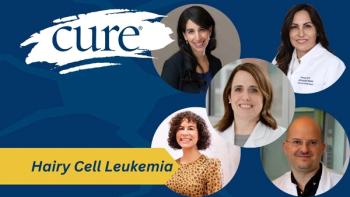
Top Breast Cancer Stories from October 2025
Key Takeaways
- Young women with breast cancer face declines in body image and sexual health post-treatment, highlighting the need for tailored psychosocial care.
- Survivors stress the importance of self-advocacy and early detection, revealing the complex realities beyond awareness campaigns.
This year’s Breast Cancer Awareness Month highlighted FDA approvals, survivorship challenges and advances in breast reconstruction.
Breast Cancer Awareness Month coverage spanned groundbreaking FDA approvals, survivorship challenges and innovations in breast reconstruction this October, emphasizing the ongoing need for patient-centered care. Here are some of our most impactful breast cancer stories from October.
Body Image and Sexual Health Challenges Following a Breast Cancer Diagnosis and Treatment
Research from Memorial Sloan Kettering Cancer Center highlights how young women with breast cancer experience significant declines in body image, sexual satisfaction and sexual interest during and after treatment. The study, conducted through the Young Women with Breast Cancer Program, evaluated 964 patients under age 45, with 328 assessed six months into treatment.
The findings revealed that 46% of participants felt less positive about their bodies following treatment, while 50% reported decreased appreciation of their body’s uniqueness. Sexuality was also affected: 34% reported lower interest in sexual activity, and 55% experienced decreased satisfaction. Hormone therapies and chemotherapy were cited as contributors, alongside surgical changes such as mastectomy.
Researchers also noted shifts in patient priorities and support needs over time. Initially, concerns centered on the disease’s impact on family and friends (27%) and communication (16%). By six months into treatment, financial concerns were most pressing (21%). Requests for social work support similarly evolved, with individual therapy and support groups remaining high-priority resources. Fertility preservation emerged as a key issue, with 25% seeking information and 18% undergoing interventions. These findings underscore the importance of tailored psychosocial care addressing body image, sexual health, fertility and mental health for young women.
Patients Explain Why Breast Cancer Awareness Month Isn’t “Pink and Pretty”
While October promotes awareness through campaigns, ribbons and fundraising, survivors report a more complex reality. Breast cancer survivor Maureen Green described the month as a reminder of the disease. “It’s not so cute when it’s your life that’s at stake,” Green said to CURE, reflecting on the emotional toll awareness campaigns can overlook.
Survivors Silvia Davis and Stephanie Wachtel highlighted additional challenges, including fertility preservation and reconstructive surgery. Davis emphasized the randomness of breast cancer, noting that neither she nor her sister had a genetic mutation. “You have to get checked, advocate for yourself, and speak up,” she advised during an interview.
Wachtel highlighted awareness campaigns’ role in promoting early detection, particularly for younger adults who may not undergo routine screenings. These personal accounts illustrate the emotional and long-term impacts of breast cancer that awareness efforts cannot fully capture.
Spotlighting Reconstruction Access During Breast Cancer Awareness Month
Dr. Evan Garfein, chief of plastic and reconstructive surgery at Montefiore, used Breast Cancer Awareness Month to discuss advances in reconstruction and persistent disparities in access. He highlighted OnPlant, a 3D-printed silicone breast model that allows patients to experience the look and feel of implants before surgery. The tool helps patients make informed decisions about implant size and shape, addressing a long-standing gap in preoperative planning.
Garfein also emphasized ongoing inequities in reconstruction access. Despite federal and state laws requiring coverage for post-mastectomy reconstruction, patients in underserved areas often face delays or limited options due to surgeon availability.
“All hospitals that treat breast cancer should provide timely reconstructive services, just as they would for heart surgery or trauma care,” he said to CURE, advocating for equitable access to comprehensive breast cancer care.
FDA Approval of Inluriyo Offers New Option for Advanced Breast Cancer
The U.S. Food and Drug Administration (FDA) approved Inluriyo (imlunestrant) for adults with estrogen receptor (ER)-positive, HER2-negative breast cancer whose disease progressed after prior endocrine therapy. The approval followed the EMBER-3 clinical trial, which demonstrated a 38% reduction in risk of cancer progression or death compared with standard endocrine therapy.
Dr. Komal Jhaveri of Memorial Sloan Kettering Cancer Center emphasized the approval’s significance, highlighting Inluriyo’s oral administration and effectiveness against ESR1-mutant tumors resistant to prior endocrine therapies. However, gaps remain. Current approvals focus on ESR1-mutant cancers, leaving treatment options limited for patients with ESR1 wild-type tumors.
“While we've made significant leaps with approvals … I think there still remain some gaps that we really need to work towards,” she emphasized in an interview with CURE.
How Menopause and Fertility are Impacted by Breast Cancer Treatment
Breast cancer therapies can trigger early menopause and affect fertility, according to Dr. Elizabeth Sakach of the Winship Cancer Institute of Emory University. Chemotherapy carries the highest risk of ovarian failure, particularly for women over 40, while radiation has minimal impact. Hormone therapies generally do not induce menopause but may cause hot flashes, cognitive changes, sleep disturbances, and weight gain.
“[Treatment-induced menopause] is an area of unmet need. … We’re really working to develop robust survivorship clinics for our patients to address these issues because many patients are surviving their cancer now, but we have to ensure that they’re doing well for years after their treatment,” she said to CURE.
Fertility preservation strategies, including egg freezing and ovarian suppression, can mitigate risk, though outcomes vary. Sakach emphasized that survivorship care should address long-term impacts on bone health, cardiovascular risk, and cognitive function, ensuring women receive comprehensive support during and after treatment.
References
- “Body Image and Sexual Health Challenges After Breast Cancer,” by Ryan Scott. CURE; Oct. 9, 2025. https://www.curetoday.com/view/body-image-and-sexual-health-challenges-after-breast-cancer
- “Breast Cancer Awareness Month Isn’t Always “Pink and Pretty,”” by Ryan Scott. CURE; Oct. 13, 2025. https://www.curetoday.com/view/breast-cancer-awareness-month-isn-t-always-pink-and-pretty-
- “Breast Cancer Awareness Month Spotlights Reconstruction Access,” by Spencer Feldmanor. CURE; Oct. 11, 2025. https://www.curetoday.com/view/breast-cancer-awareness-month-spotlights-reconstruction-access
- “What the FDA Approval of Inluriyo Means for Patients With Breast Cancer,” by Alex Biese. CURE: Oct. 13, 2025. https://www.curetoday.com/view/what-the-fda-approval-of-inluriyo-means-for-patients-with-breast-cancer
- “How Breast Cancer Treatment Can Impact Menopause and Fertility,” by Spencer Feldman. CURE; Oct. 29, 2025. https://www.curetoday.com/view/how-breast-cancer-treatment-can-impact-menopause-and-fertility
For more news on cancer updates, research and education,





